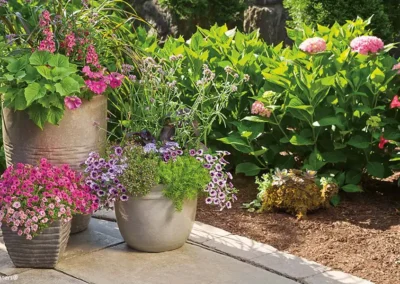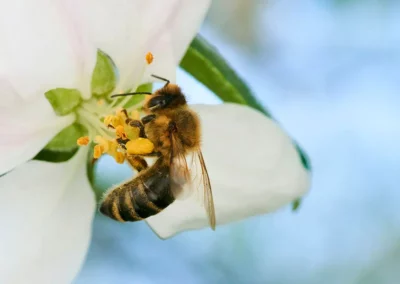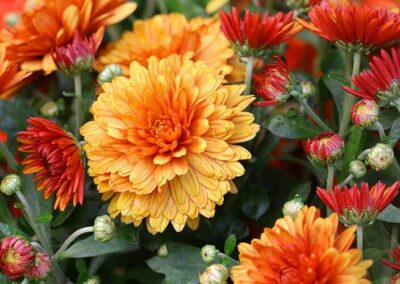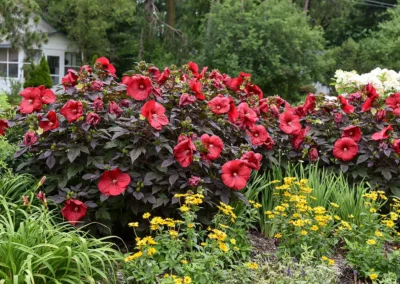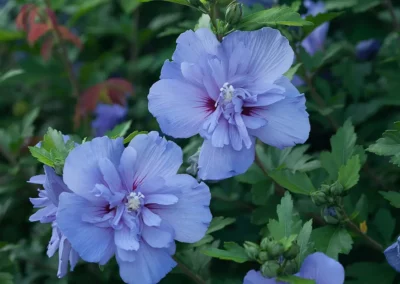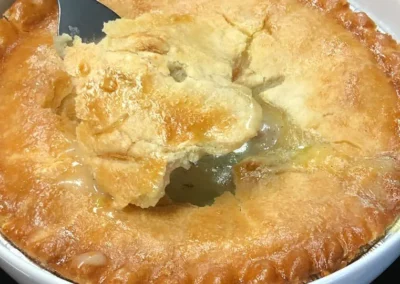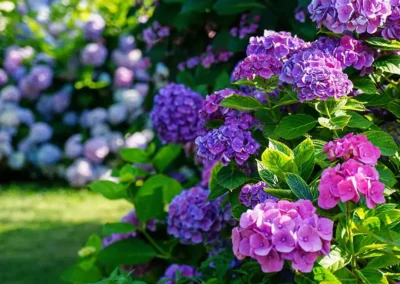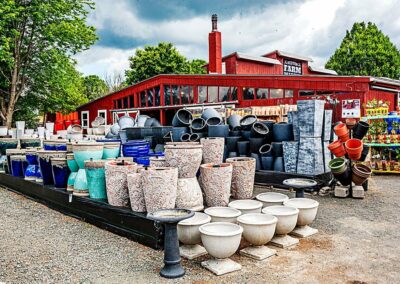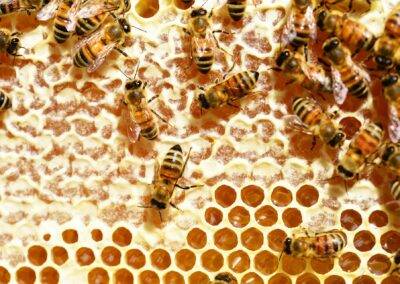If you’re growing hydrangeas in your yard, you already know how these stunning shrubs grace our gardens with their vibrant colors and lush foliage. However, to ensure your hydrangeas flourish, fall is the perfect time to wield those pruning shears and give them a little TLC.
We’ll walk you through the art of pruning your hydrangeas, helping you improve their shape and their flower power. Knowing when to prune is critical to strengthening flowering on different varieties; some bloom on new wood and some bloom on old wood.
Why Prune Your Hydrangeas in the Fall?
Fall pruning might seem counterintuitive, especially when you’re used to the spring cleanup frenzy with other plants. However, hydrangeas are a unique case. Pruning them in the fall serves several purposes:
- Encourages strong growth: Fall pruning prompts hydrangeas to channel their energy into establishing strong root systems over winter. This paves the way for healthier, more robust growth in the upcoming seasons.
- Enhances next year’s blooms: Certain hydrangea varieties, like the mophead and lacecap types, bloom on old wood, which means the growth from the previous year. Pruning them in fall ensures that new growth won’t interfere with next year’s flower production.
- Maintains shape and size: Pruning helps control the size and shape of your hydrangeas, preventing them from overtaking your garden space.
Tools of the Trade
Before you begin your pruning adventure, make sure you have the right tools on hand:
- Pruning shears: For fine cuts on small branches and stems
- Loppers: For thicker branches that require a bit more oomph
- Gardening gloves: To protect your hands from scratches
- Soap and Water: To clean your tools after pruning to help prevent the spread of disease
Old Wood vs. New Wood
Hydrangeas can be categorized into two main types based on their flowering habits: those that bloom on old wood and those that bloom on new wood.
- Bloom on Old Wood: Some hydrangea varieties produce flower buds on the stems that grew during the previous growing season. These flower buds are formed in late summer or early fall and remain dormant through the winter. If you prune these types of hydrangeas too aggressively in the spring or late winter, you risk removing these flower buds, which will result in reduced or no flowers during the current year.
- Bloom on New Wood: Other hydrangea varieties produce flower buds on the new growth that emerges in the current growing season. These types of hydrangeas are generally more forgiving when it comes to pruning, as they can be pruned back in the late winter or early spring without significantly affecting flowering.
When pruning hydrangeas that bloom on old wood, it’s important to be careful not to remove too much of the previous year’s growth if you want to enjoy a robust flowering display. Typically, the best time to prune these types of hydrangeas is right after they finish flowering, so you can remove any dead or spent flower heads and shape the plant as needed while preserving the next season’s flower buds.
Pruning Tips for Different Hydrangea Varieties

Mophead and Lacecap/Bigleaf Hydrangeas
Hydrangea macrophylla
These are the quintessential hydrangeas known for their large, globe-shaped clusters of flowers. Since they bloom on old wood, prune them right after they finish flowering. Remove any dead or weak wood, as well as faded flowers.

Panicle Hydrangeas
Hydrangea paniculata
These are the hardiest hydrangeas, producing cone-shaped flower clusters. Since they bloom on new wood, you can prune them more aggressively in the fall. Cut back stems to about a third of their height to encourage strong new growth.

Smooth Hydrangeas
Hydrangea arborescens
These are known for their white or pink ball-shaped flower clusters. Like panicle hydrangeas, they bloom on new wood. Cut them back in the fall to about a foot from the ground to stimulate fresh growth.

Oakleaf Hydrangeas
Hydrangea quercifolia
These are relatively early bloomers in June and bloom on old wood. With leaves that look like they come from an oak tree, these hydrangeas provide multiple seasons of interest as they bloom in the early spring, and their leaves turn a striking red and deep burgundy in the fall. It’s best to do any needed pruning right after they’ve bloomed in late summer.

Endless Summer® Hydrangeas
Hydrangea macrophylla
Since Endless Summer® Hydrangeas bloom on both old wood and new wood, you’ll get the most flowers by protecting the flower buds on the old wood. To do this, do NOT prune or cut back your shrubs after August 1st. Leaving the fall blooms on your plants over the winter provides winter interest, and ensures you aren’t removing buds that will become flowers in the spring and summer.
If you prune to shape the plant or cut blooms for fresh hydrangea arrangements, be sure not to over-prune, or you will have fewer blooms next year.
Step-by-Step Hydrangea Pruning Guide
- Assess your plant: Take a good look at your hydrangea. Identify any dead, diseased, or weak wood that needs to be removed.
- Cut out the dead flowers: If your hydrangea has already bloomed and its flowers have faded, snip them off. This tidies up the appearance and encourages energy to be directed towards the plant’s growth.
- Or leave the dead flowers as they are: Some gardeners like the look of the faded blooms and leave them on the plant until later. Just be aware that rain/snow/ice can cause these blooms to get heavy and break off. Then you will absolutely need to prune those stems.
- Thin them out: For crowded areas, thin out branches by cutting them back to the base. This improves air circulation and reduces the risk of diseases.
- Trim them down: If you’re dealing with overgrown hydrangeas, you can safely trim back the stems. Be sure to cut just above a pair of healthy buds to encourage new growth.
- Maintain their shape: As you prune, step back occasionally to ensure you’re maintaining the desired shape of the shrub. Hydrangeas can be pruned into various shapes, from rounded to more naturalistic forms.
A Little Patience Goes a Long Way
Remember, gardening is a journey, not a destination. Don’t be disheartened if your hydrangeas don’t bounce back immediately after pruning. They might take some time to recover and grow stronger. Fall pruning is an investment in the future beauty of your garden, and the rewards will come in the form of healthier plants and more breathtaking blooms.
Aftercare and Winter Preparation
Once you’ve completed your fall pruning, give your hydrangeas a good watering to help them settle in before the colder months. Applying a layer of mulch around the base of the plants will help retain moisture and protect the roots from frost.
A Garden of Hydrangea Happiness Awaits
As you wrap up your fall pruning session, take a moment to appreciate the beauty you’ve nurtured. Your hydrangeas are ready to embrace the coming seasons, equipped with stronger roots and a rejuvenated spirit.
Gardening is a labor of love, and each snip of the shears is a gesture of care that will reward you with a garden of splendor in the years to come. So put on your gardening gloves, grab those pruning shears, and let your zone 7 garden shine with the brilliance of well-tended hydrangeas.
Happy pruning from your friends at Reston Farm Garden Market!










